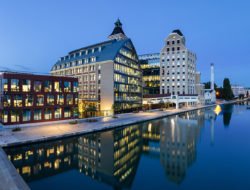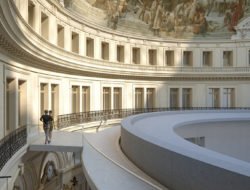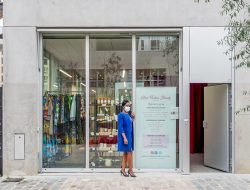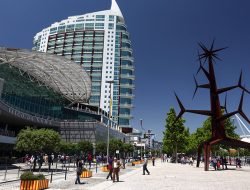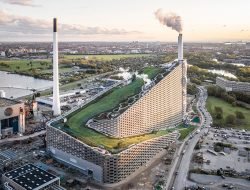The Japanese company Toyota plans to create a prototype of the city of the future. The Danish architectural firm Bjarke Ingels will collaborate on this project.
It is not just Google that dreams of building a connected district. Recently, Toyota announced plans to develop its city of the future, at the foot of Mt.Fuji. At the CES held in Las Vegas in early January, Toyota unveiled its pharaonic project: building a city called Woven City. Shared mobility, artificial intelligence, robotics, renewable energies… “Woven City will be the prototype of the city of the future, where people live, work, play, and participate in a living lab,” said Toyota’s CEO.
Built on the ruins of an old factory, Woven City will spread out over 70 hectares of land and accommodate some 2,000 residents. Access will be given first to Toyota employees and their families, and then to retirees, retailers, researchers and industrial partners. Toyota’s hydrogen fuel cell technology will power the city. The giant car manufacturer aims to test its technologies in home automation, autonomous vehicles and clean energy out in the open air.
A sustainable and inhabited laboratory
Not surprisingly, urban mobility technologies will be at the heart of the project. Toyota intends to create three dedicated lanes for each type of mobility: rapid transit using autonomous cars, for example, a lane for soft mobility, and one for pedestrians. On the housing side, connected houses filled with AI and sensors will continuously test new residential services, such as automatically refilling the fridge, taking out the garbage, but also ensuring the good health of the inhabitants.
The Danish architect Bjarke Ingels – to whom we owe the Google headquarters in California and the two skyscrapers of the World Trade Center – has been commissioned to design Woven City. Its mission will be, above all, to build houses in durable materials and to inject life into a city that is a priori very technocentric. Like the Quayside district of Toronto, operated by Google Sidewalks Labs, the buildings will be constructed primarily of wood. Another similarity with Google is that an underground network for the transport of goods and waste will be set up. The first construction works could be launched as early as 2021.
More info: https://www.woven-city.global
Tags: Bjarke Ingels, Mt Fuji, smart city, Toyota, urban planning

































